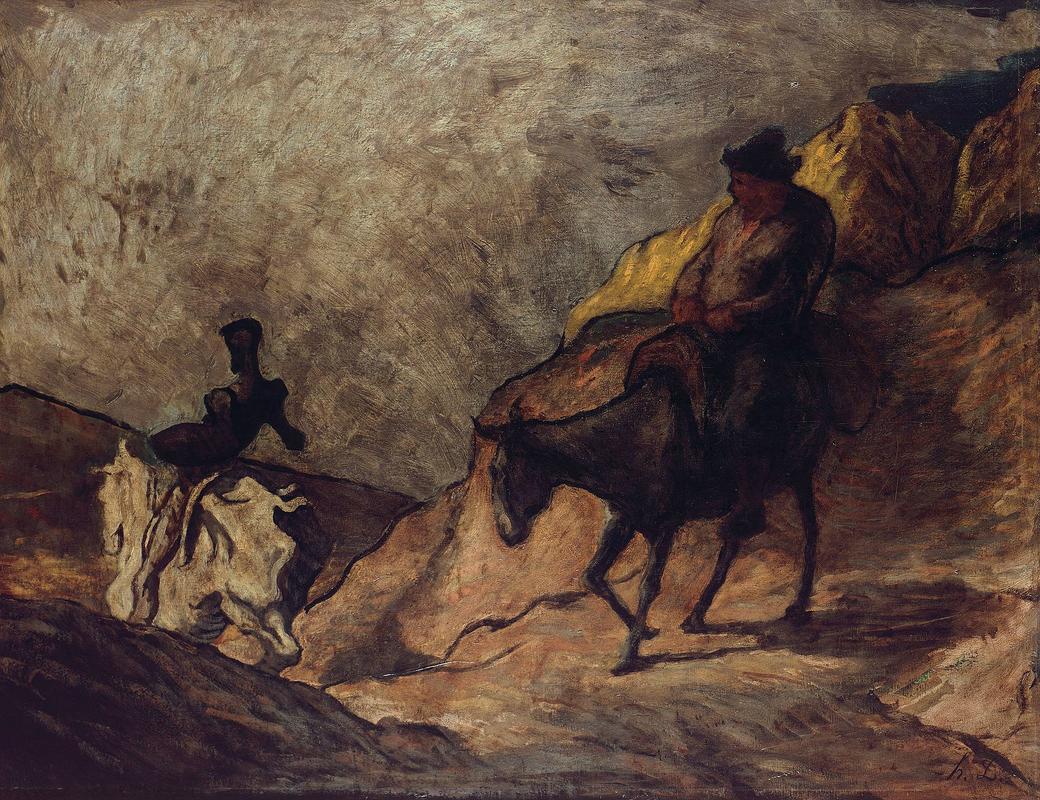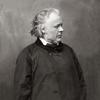More about Don Quixote and Sancho Panza

Contributor
Toward the end of his life, Honore Daumier was going blind, but he must have felt some sort of swell in artistic vision when he read Don Quixote, because he dedicated years to a series of forty paintings of Don Quixote and his sidekick Sancho Panza.
Daumier began this series of depictions on Don Quixote and Sancho Panza deep into his life, as his vision degraded further and further toward blindness. He was particularly interested in these two characters, and the series of paintings and drawings included almost no other characters or references to the book. As he progressed through the paintings and drawings, the pieces grew increasingly simple and increasingly depicted only Don Quixote. Many scholars speculate that this wasn’t because he lost interest in Sancho, who served as the simple, loyal sidekick. Rather, they think Daumier combined Don Quixote and Sancho Panza into one character, Daumier himself (but we’ll get into this later).
This painting, being one of the earliest in his series, actually depicts Sancho Panza in the forefront, though of course he’s in a shadow and blends almost fluidly into his horse. Of his forty drawings and paintings of Don Quixote, less than ten depict actual scenes from the book, and the rest are like this one, personifications of the characters, often traveling in single file line.
Daumier spent a huge portion of his life on satirical political cartoons (almost 4,000 in total) and political paintings that sent him in and out of prison in Paris for their controversy. As he grew older and shifted to painting, it almost seems bizarre at first that he chose Don Quixote as his subject matter. But then again, Don Quixote is everything Daumier stood for. Don Quixote erupted out of Spain for its heavy suggestions of morality and social class, two things to which Daumier essentially dedicated his entire life. The book itself is all about a man, Alonso Quixano, who longs for the past after living through the French Revolution. He meets the peasant Sancho Panza, and makes him his squire. Then he declares himself Don Quixote and they set off on an adventure around the country, obsessing over chivalrous deeds.
Daumier's later paintings and drawings in the series even seem to suggest that the characters are himself - an idealist (Don Quixote) and a realist (Sancho) all wrapped up into one confused person. The paintings themselves received relatively little recognition, good or bad. They were accepted into several Paris Salons but mostly just slid under the radar until after Daumier’s death in 1879.
Sources
- Cervantes. Don Quixote. Konecky & Konecky: Oxford University Press.
- "Don Quixote." Artble. July 19, 2017. Accessed April 30, 2019. https://www.artble.com/artists/honore_daumier/paintings/don_quixote.
- Laughton, Bruce. "Daumier's Drawings of Don Quixote." Master Drawings 34, no. 4 (1996): 400-13. http://www.jstor.org.libproxy.newschool.edu/stable/1554274.











